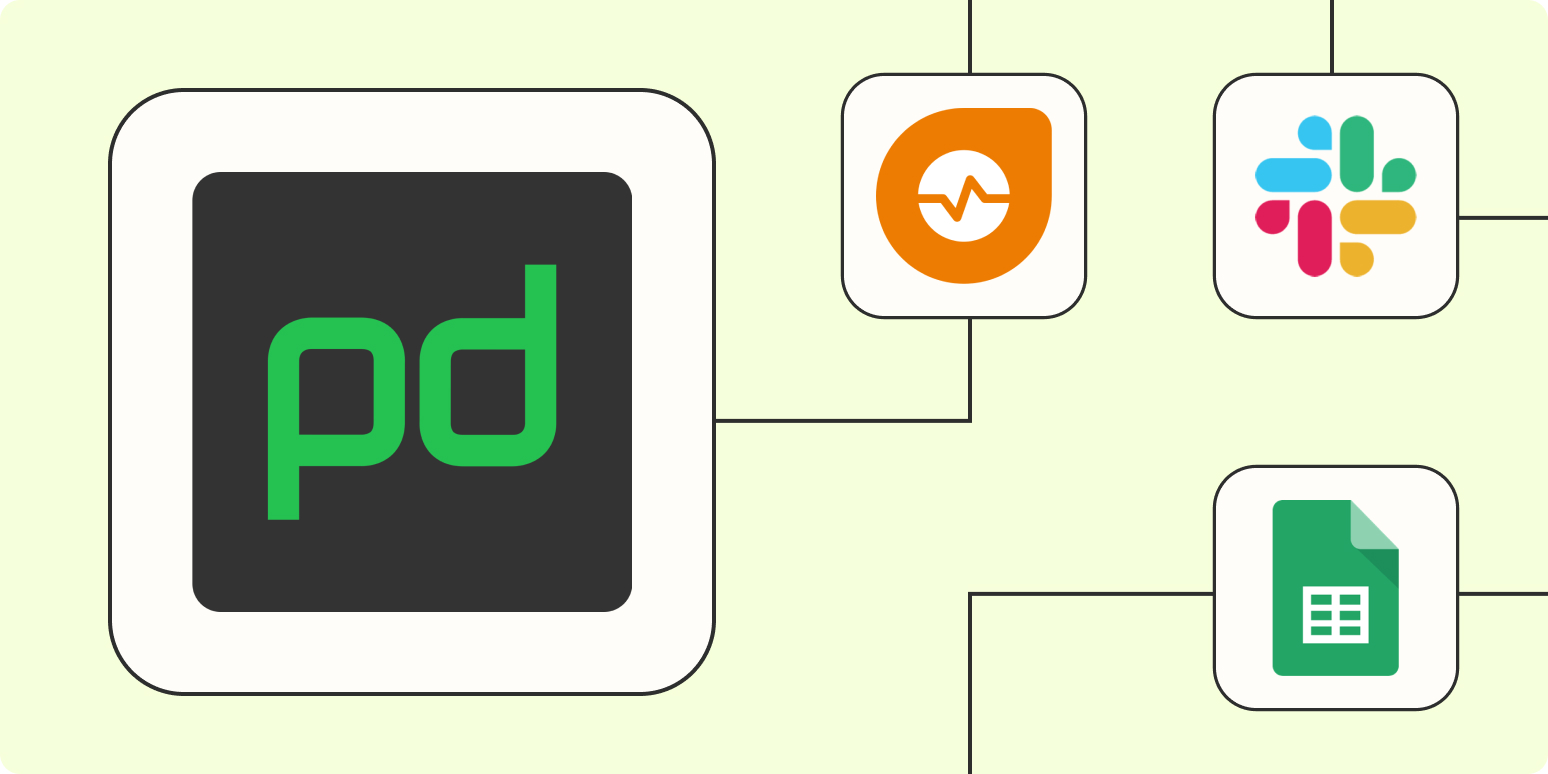Customer confidence is hard to win and easy to lose. And when it comes to software, being slow to respond to issues can erode that relationship altogether.
PagerDuty is one of the leading tools for helping IT teams resolve issues fast. But as your digital operations grow, it can be difficult to keep up. Identifying what processes aren’t scaling well—and the tools and workflows you can put in place to remedy that—is essential to creating a smooth system that grows with your team.
That’s where automation comes in. By pairing PagerDuty with Zapier, you can automate key parts of your workflow and get back to working on what matters. Here’s how.
Zapier is the leader in no-code automation—integrating with 5,000+ apps from partners like Google, Salesforce, and Microsoft. Build secure, automated systems for your business-critical workflows across your organization’s technology stack. Learn more.
Table of contents
To get started with a Zap template—what we call our pre-made workflows—just click on the button. It only takes a few minutes to set up. You can read more about setting up Zaps here.
Trigger new incidents automatically
Manually creating new incidents in PagerDuty is a time-consuming process—but it doesn’t have to be. If you’re collecting incident reports and transferring them to PagerDuty by hand (well, technically, by keyboard), you can use Zapier to connect your other tools to PagerDuty and eliminate the manual workload.
From a chat tool
Many companies have a channel in their chat tools that serves as a dedicated place to report incidents. Monitoring that channel, though, is time-consuming, and it’s all too easy to miss a report and never actually get into PagerDuty. If you could automate this process, you could be assured that every incident report in that channel makes it into PagerDuty automatically.
With the Zaps below, you can trigger new incidents in PagerDuty every time there’s a new post in a particular channel or any time someone reacts to a post with a particular emoji.
From email
Setting up a dedicated email is a popular way to gather user issue reports. While this is an easy process from the reporting side of things, someone needs to monitor it all the time, which, inevitably, leads to issues being acted on late, or even not at all. For example, if someone forgets about their on-call shift, you might not respond to critical issues until the next day.
With the Zap below, you can trigger new issues automatically for each email that comes to that email address, ensuring that report gets the attention it needs, fast.
From your website monitoring tools
You can’t afford to waste a second when your website or web app goes down. By syncing your website monitoring tool with PagerDuty, you can trigger a new incident automatically as soon as one is created in your website monitoring platform. This way, you can cut out the manual admin work and get your team moving faster to minimize downtime.
From an RSS feed
If you’re getting updates on your digital operations via RSS, you can use this Zap to trigger a new incident in PagerDuty automatically.
Once this Zap is on, it will trigger for every new item in your RSS feed, reliably adding all its information as a new incident without manual data entry (and the human error that comes with it).
From anywhere
If you’re gathering customer issues using a tool that doesn’t have a Zapier integration, webhooks are a great way to capture them. Just set up your custom webhook and use this Zap template to capture that information and add it to PagerDuty automatically.
Alert your team when an incident is assigned to them
Asking your team to keep an eye on their PagerDuty notifications—along with Slack, email, and other platforms you’re using for work—is a tall order. When notifications are coming at you from everywhere, it’s helpful to channel them all into one place.
With the Zaps below, you can immediately inform your team when a new incident is triggered in PagerDuty on the platform of their choice. Whether that’s email, chat, or even text, you can ensure that no notification goes unaccounted for.
Duplicate PagerDuty incidents on other platforms
Not everyone in your company may have PagerDuty access. For security’s sake, it’s often best limit access to tools with potential sensitive information in them to those who need it. You might also limit the number of team members with access to a particular tool to save money for your company.
Unfortunately, being prudent can come with some logistical issues. If you need to loop in another team on a particular incident, for example, it’s difficult to do when all of the records are only in PagerDuty.
With the Zaps below, you can automatically duplicate newly triggered incidents in PagerDuty to other platforms—lending you the ability to work with other teams without giving access to potentially sensitive apps.
Enable your digital ops
Your IT and DevOps teams have a lot on their plate—managing PagerDuty shouldn’t add to it. Automation won’t fix every incident that pops up, but it will help power the processes that enable your team to work faster and continue to earn your customers’ trust.
[adsanity_group align=’alignnone’ num_ads=1 num_columns=1 group_ids=’15192′]
Need Any Technology Assistance? Call Pursho @ 0731-6725516




